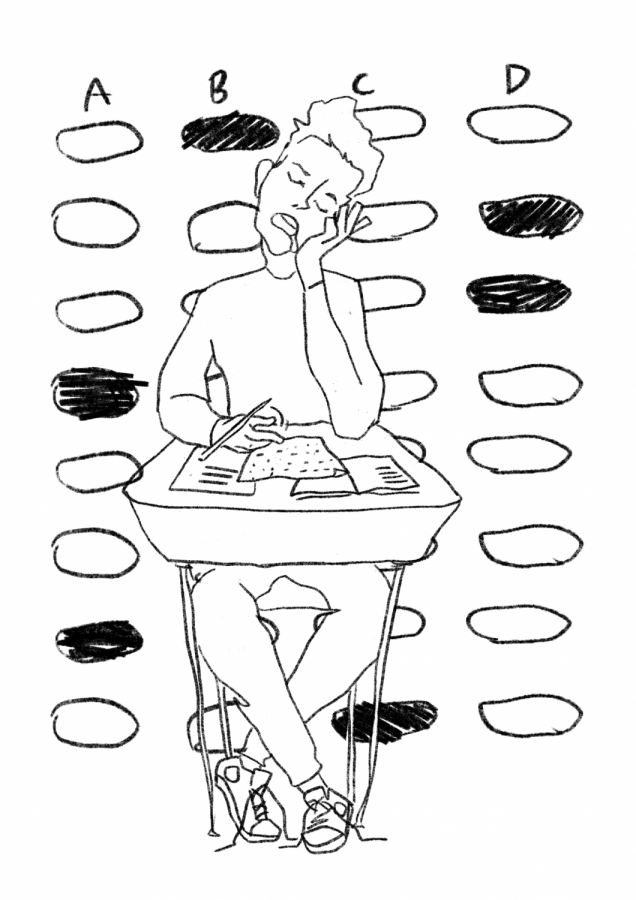The PSATs Are a Scam
December 2, 2021
The Preliminary Scholastic Aptitude Test (PSAT), administered to high school sophomores and juniors, is meant to acquaint students with the content and format of the SAT. For high scoring students, the PSAT provides an opportunity to be nominated for the National Merit Scholarship, a highly competitive scholarship that covers a fraction of college tuition. While students enjoy the day off, the PSAT brings to light questions about the necessity of a “practice SAT.”
The College Board mainly promotes the PSAT as an opportunity to win the National Merit scholarship, which in reality, is extremely uncommon and not a worthwhile incentive for the vast majority of students. According to the National Merit Scholarship Corporation, only 15,000-50,000 students out of approximately 1.6 million taking the PSAT every year qualify for the scholarship, amounting to a 0.9-3% acceptance rate. Students last year had a higher chance of getting into Harvard or Stanford (5% acceptance rates) than of winning the scholarship.
If a student scores at least 1400 out of 1520 (128 questions correct out of 139), they become a semifinalist. Around 90% of semifinalists win the scholarship; however, that doesn’t necessarily guarantee the prize money. Only 180 public and private universities out of 5,300 in the US offer the scholarship. The scholarship itself, funded by colleges and corporate sponsors unaffiliated with the College Board, provides $500 to $2,000 in financial aid with only four schools offering full tuition. Although $2,000 is no small sum of money, it doesn’t compare to the average annual college tuition, ranging from $10,000 to $80,000. Does it make sense to spend time preparing for the PSAT for an extremely rare and, for the most part, marginal opportunity?
It is also unclear why the PSAT is obligatory for 10th and 11th graders, especially considering that the SAT is not. Taking the test is usually mandated by high schools, but in six states, including Connecticut and Maine, it is mandated by the state. Additionally, students outside of the US are encouraged to take the PSAT, although only US citizens and residents are eligible for the scholarship. Time and resources are wasted preparing for and administering a test that is not even considered by university admissions. The PSAT typically costs $16 per student, according to the Princeton Review, which is paid either by the school or the students themselves. Besides the $30 million the College Board makes every year from this test, considering 1.6 million students take it, there seems to be no compelling reason for this mandated exam.
The time, money, and resources could certainly be better spent on more important aspects of the college application process. AP tests and the SAT, crucial factors for colleges, could become less expensive and more accessible to all. For instance, the $16 PSAT fee could subsidize the $20 annual official College Board SAT prep book that is useful to many students studying. This is only one example of the many possibilities for a more productive use of students’ and schools’ time and money than the PSAT.
This piece also appears in our November 2021 print edition.











